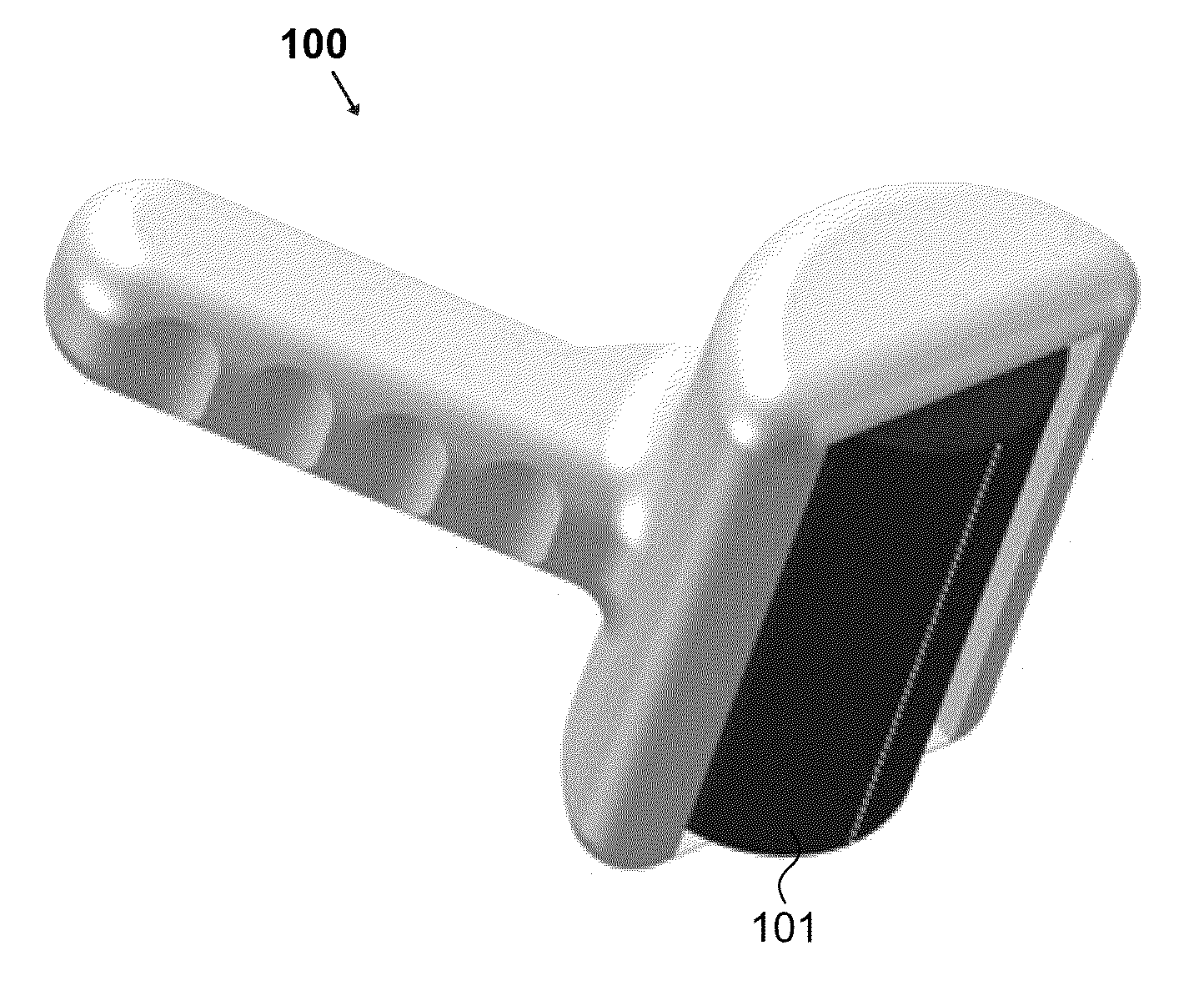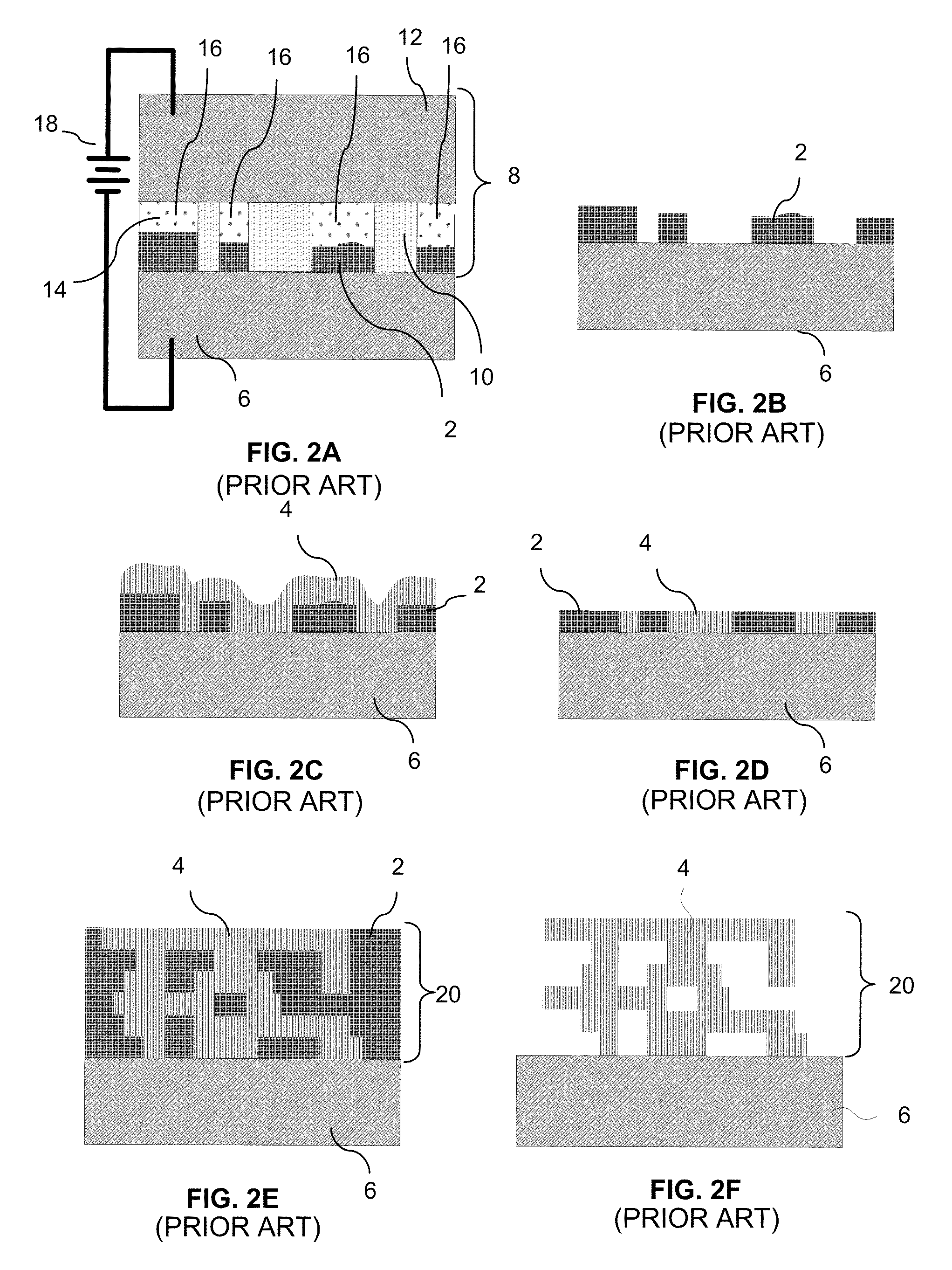Microneedles, Microneedle Arrays, Methods for Making, and Transdermal and/or Intradermal Applications
a technology of microneedles and microneedle arrays, applied in the field of improving transdermal and/or intradermal drug delivery methods, can solve the problems of affecting the accuracy of the treatment, affecting the treatment effect, and destroying the separation of the masking material from the substrate, so as to reduce or even eliminate the pain associated, reduce the effect of pain and controllable drug delivery
- Summary
- Abstract
- Description
- Claims
- Application Information
AI Technical Summary
Benefits of technology
Problems solved by technology
Method used
Image
Examples
first example
Tapering Needle
[0199]FIGS. 11A-11C depict, respectively, a perspective view of a needle 1100, a cut view of the needle of showing internal passages, and an array formed from such needles for use in some examples. In some implementations of the example and its variations, the needles are formed from a multilayer, multi-material electrochemical fabrication process. To minimize the number of layers that must be formed and / or to minimize the impact that discrete layer steps will have on the structure as formed, the needles may be fabricated using a specific orientation. In the present example, the needles are formed with the stacking axis of the layers being the Z-axis while the planes of the layers are X-Y planes. To reduce stacking height, the longitudinal axis (i.e. the longest axis of a single needle, i.e. the Y-axis in the present example) may be oriented in the plane of the layers and to further minimize the stacking height of layers, the thinnest transverse direction (i.e. the Z-...
second example
Needle with Hips
[0208]FIGS. 12A-12D depict a needle 1200 and an array of needles such needles according to a second example of needles that may be used in some embodiments of the invention. The needle 1200 of the example of FIGS. 12A-12D includes an inlet hole 1220 (assuming material is to flow from the proximal end of the needle to the more distal outlets), two vertical outlet holes 1226, and two horizontal outlet holes 1222, and is also sharp at its distal tip or edge 1216. The needle features a bulged hip 1210 that tapers down in region 1206 to edge 1216. The hip 1210 is also defined by a maximum lateral extension that extends from the radial extent of the shaft or body portion 1204 of the needle via region 1208. The regions 1208 and 1206 may be considered to define an “arrowhead” (i.e. a portion of the needle that s positioned between the proximal and distal ends of the needle and that has a width that is greater than the width of an immediately proximal portion of the needle) w...
fourth example
Needles with Primary and Secondary Cutting Edges
[0223]In the fourth example of a needle implementation that may be used in some embodiments of the invention, each needle is provided with multiple cutting edges, some of which are staggered or recessed with respect to others. Such staggering may be applicable to micro-needles that are fabricated either horizontally or vertically. Cutting edges are obtained by designing individual layers with sharp points or by designing three-dimensional structures with thin blades which upon cross-sectioning produce layers with fine leading edge points (e.g. when the needle is fabricated horizontally, i.e., with the long axis of the needle parallel to the plane of the EFAB layers and with a tapering blade extending vertically through two or more layers). The needle of FIGS. 5-10 has a primary cutting edge that is sharp while secondary cutting edges are relatively rounded and dull.
[0224]FIG. 14A provides a perspective of a smooth walled CAD design of ...
PUM
 Login to View More
Login to View More Abstract
Description
Claims
Application Information
 Login to View More
Login to View More - R&D
- Intellectual Property
- Life Sciences
- Materials
- Tech Scout
- Unparalleled Data Quality
- Higher Quality Content
- 60% Fewer Hallucinations
Browse by: Latest US Patents, China's latest patents, Technical Efficacy Thesaurus, Application Domain, Technology Topic, Popular Technical Reports.
© 2025 PatSnap. All rights reserved.Legal|Privacy policy|Modern Slavery Act Transparency Statement|Sitemap|About US| Contact US: help@patsnap.com



